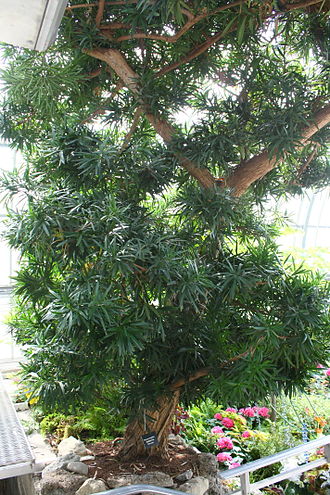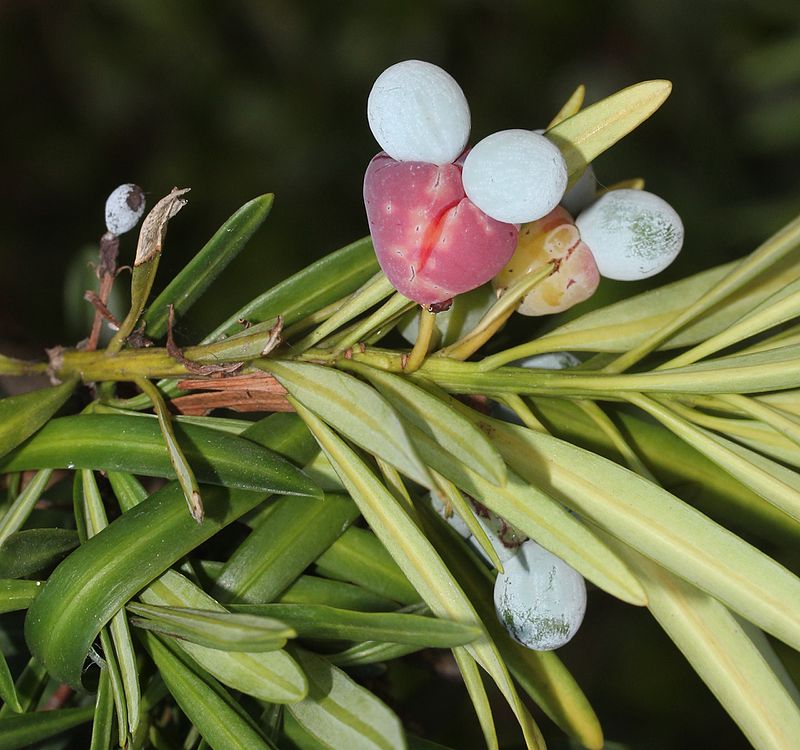
Native to southern Japan and southern and eastern China, this evergreen shrub or small tree is also called Buddhist pine and yew plum pine but is neither a pine nor a yew. It belongs to the Podocarpaceae, a large family of conifers that are mostly native to the Southern Hemisphere. The trees grow 20-40′ tall and have dark green needlelike leaves that are strap-shaped, 2.4–4.7″ long, and arranged in spirals. A non-flowering plant, yew pine produces male and female cones on different trees. The male cones, clustered in yellow strobili, provide pollen and fertilized female cones bear 1-2 seeds on top of a swollen, fleshy berry-like structure called an aril that ripens to purple. Although the aril is edible the seeds are poisonous. The compact columnar form and good response to shearing make yew pine an ideal plant for hedges, screening, and topiary, and its lustrous foliage makes it a fine specimen plant or part of a foundation planting. Yew pine also tolerates salt spray and is useful at the seashore. It does well in indoor or outdoor containers and is good for bonsai. The genus name, Podocarpus, coms from the Greek ποδός (podos) meaning foot, and καρπός (karpos) meaning fruit. The specific epithet, macrophyllus, comes from Greek μακρός (makrós) meaning large, and φύλλο (fillo) meaning leaf. Photo Credit Wikipedia

Type: Evergreen coniferous tree
Outstanding Feature: Compact form; attractive foliage
Form: Pyramidal
Growth Rate: Slow
Bloom: Plants do not produce flowers; male and female parts occur on different trees with ‘berries” produced only on the female trees. Both male and female trees are needed if “berry”production is important.
Size: 20-40’ H x 4-10’ W
Light: Sun or light shade
Soil: Fertile, well drained, neutral pH; very salt tolerant; tolerates some drought when established but needs weekly watering in extreme heat.
Fertilizer: Apply complete food such as 15-15-15 twice a year, in early spring and early fall.
Hardiness: USDA Zones 7-11; Sunset climate zones 4-9, 12-24
Care: Prune in May and July to achieve desired shape and size.
Pests and Diseases: Aphids (can be controlled by strong stream of water or Neem oil)
Propagation: Semi-hardwood stem tip cuttings in summer
Outstanding Selection: ‘Maki’ (dwarf, 4-6′ H x 2″ W
Photo Credit: Alpsdake Wikipedia